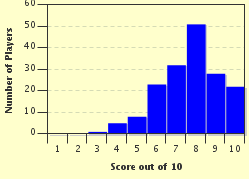Quiz Answer Key and Fun Facts
1. One of the most famous land deals in history involves the purchase of Manhattan Island for 24 dollars. Which agent negotiated this deal on behalf of the Dutch West India Company in 1626?
2. In Roman history, the Second Triumvirate began in 43 BC, not long after an important assassination. Taking control of the Roman world, Marc Antony and Octavian (the future Augustus) divided the provinces between them. Who was their third partner, who would be edged out before it was over?
3. Lydia Liliuokalani was the last ruler of her island nation. Trying to restore the traditional rights of her people, she was forced to accept her overthrow by foreign nationals who established a republic. She then saw her homeland annexed by another country. Of which nation was she queen?
4. At one stroke of a pen, the size of the United States nearly doubled for $15 million dollars. The Louisiana purchase included land that would become all or part of 15 American states. Which American president supported this proposal that his ambassadors brought back from Napoleon in 1803?
5. In this day and age we often think of salt as something we do not want to consume to excess. Some salt, however, is necessary to the function of our body. Which metal did West African trading kingdoms such as Ghana and Mali trade on a roughly one to one ratio for salt from North African travelling merchants?
6. In 1978, Donald Sutherland played an instructor in a now-famous "college" movie. He was given a choice between a flat-fee payment and a percentage of the movie's profits. For which 1978 movie, thinking it would be unsuccessful, did he accept a flat fee?
7. You know people blame you when they name the situation after you. In 1867, Secretary of State William Seward negotiated a purchase of territory from Russia for $7.2 million dollars. The deal--described by many as "Seward's Folly"--involved what would become the land of which US state?
8. It has gone down in history as one of the most lopsided sports trades. In 1989, two NFL teams made a trade that involved running back Herschel Walker and four draft picks on one side and five players and eight draft picks on the other. Which two teams were involved in this mega-deal?
9. Until 1912, members of the United States Senate were elected by state legislators rather than the popular vote. Which famed 19th century political figure withdrew from an 1854 Senate election in his state's legislature in favor of a candidate who he was leading by a ratio of 9 to 1?
10. Colonel Tom Parker was one of the most notorious managers in history. He made sure to get his fair share and more from the artist/group he represented -- starting at 25% and eventually rising to 50%. For which artist/group was Colonel Parker the manager, for over 20 years?
Source: Author
bernie73
This quiz was reviewed by FunTrivia editor
bloomsby before going online.
Any errors found in FunTrivia content are routinely corrected through our feedback system.

